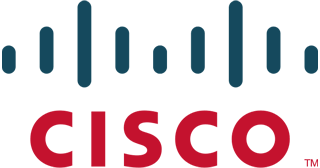Technology for Impact: Year 3
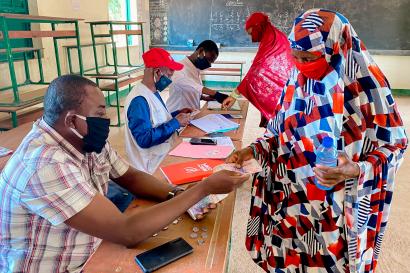
Mercy Corps & Cisco
The Technology for Impact partnership is a 5-year collaboration between Mercy Corps and Cisco. Cisco has given the Mercy Corps Technology for Development team (T4D) $8.5 million in funding and $1.5 million in product and technical expertise to support seven specific initiatives to unlock new possibilities and reach more people through the power of technology. Our combined vision is to work toward a world of digital inclusion and opportunity where the ethical use of technology empowers secure, productive and just communities.
Featuring stories from the Mercy Corps’ global team, this year’s Annual Impact Report focuses on Technology for Impact’s engagement with program participants, Mercy Corps staff, and the humanitarian community across four themes: Impact, Innovation, Influence, and Implementation.
Technology for Impact: Global Reach
To date the Technology for Impact partnership has reached 39 countries with 52 different tech-enabled interventions. Together, we’ve reached more than 7 million participants with activities like digital information services, WiFi access, digital cash and voucher assistance, and more.
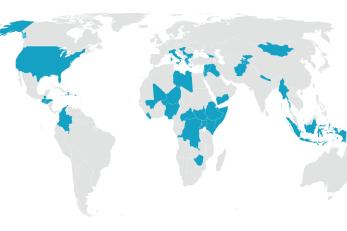
-
64,000
-
38,200
-
5
Amplifying Our Impact
Digital access, global impact
Mercy Corps helps build resilient communities that are equipped to respond swiftly and effectively to natural disasters and conflict events.
In year three of the Technology for Impact partnership, we helped communities around the world stay connected and strengthen systems for the future by establishing and reinforcing accessible public WiFi networks and exploring ways to counter the sometimes destructive aspects of social media.
Mercy Corps believes that when vulnerable populations have access to relevant and credible information about their rights, laws and the availability of appropriate services, they regain power to make choices that protect themselves, their families and each other.
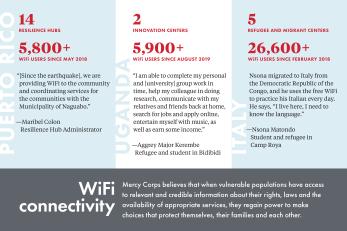
Fueling Innovation
Learning and evolving
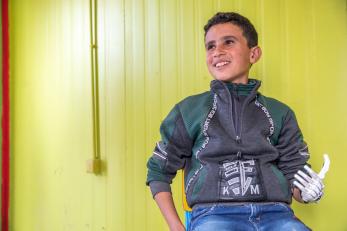
“Today is a happy day for me because I have another hand now. When I received this hand, I felt an indescribable feeling.”
‑ Mohammed
In collaboration with Mercy Corps’ technical experts and local country teams, and with support from the Technology for Impact partnership, T4D has created a pipeline to pilot new solutions, replicate successes and build platforms for ongoing iteration.
From establishing 3D-printing projects in refugee camps to facilitating community dialogue around dangerous speech, the T4D team has learned from the successes and challenges of every engagement. When it comes to trying new things, it’s clear that managing expectations, designing in collaboration with users and being willing to pivot are key to innovation.
Growing our Influence
A model for flexible humanitarian aid
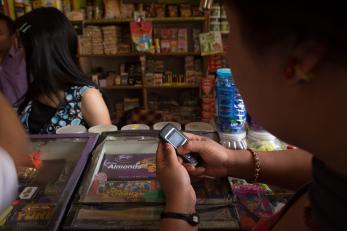
Cash and voucher assistance (CVA) has quickly become a preferred modality for humanitarian response, because it ensures program participants have flexibility to buy the goods and services they choose to best meet their needs.
Digitizing and automating CVA programming can help humanitarian organizations reach more people more efficiently and effectively by streamlining targeting and enrollment, delivering transfers at scale, securely sharing data with peers and ensuring program continuity amid operational adjustments required by COVID‑19 safety measures. In year three, six Mercy Corps CVA programs transitioned to digitized and automated ecosystems to improve transparency and accountability to communities being served, working alongside technology partners to ensure the safe delivery.
Improving Systems and Processes
New ways to enhance transparency and accountability
Community Accountability and Reporting Mechanisms (CARM) give members of local communities and Mercy Corps team members a safe, confidential and accessible way to provide feedback on humanitarian programming through locked suggestion boxes, toll-free hotlines and WhatsApp messages. Mercy Corps program teams adjust their response based on the nature of the feedback, making any necessary programmatic or safeguarding adaptations.
While Mercy Corps has had CARM policies in place for years, they have been led primarily by individual country teams and were in need of better global oversight. Over the past year, T4D has supported this important agency priority by automating emails with coded scripts, building a digital database, and streamlining data collection and storage with digital apps. Automating steps of the Community Accountability and Reporting Mechanism (CARM) saves field teams hours and improves reporting accuracy.
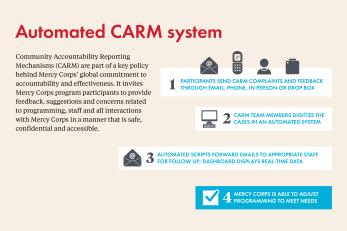
Thank You, Cisco
We have much to do in this never-ending challenge to help build secure, productive and just communities, but we are more energized and indispensable than ever before. And of course, we remain ever-grateful for the unwavering support of Cisco in helping us move our goals forward amid evolving global realities. This project has been made possible in part by a grant from the Cisco Fund, an advised fund of Silicon Valley Community Foundation.
